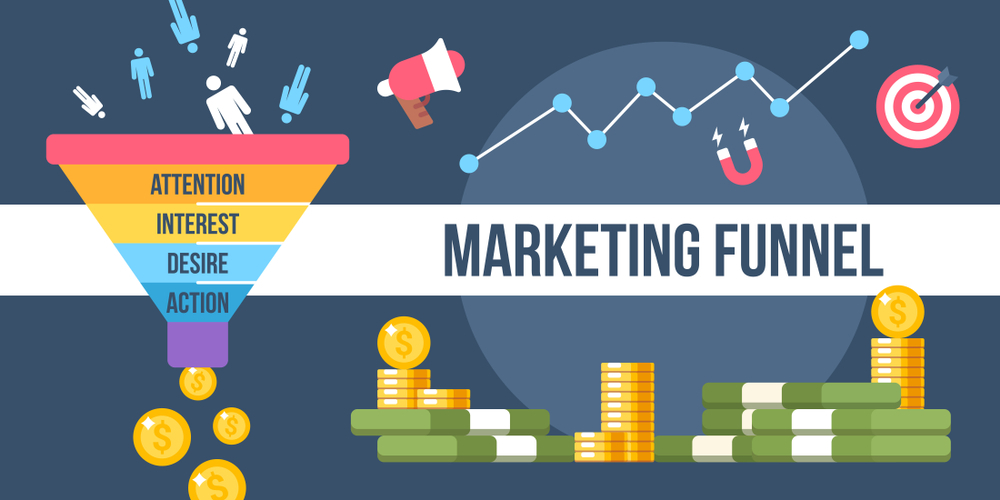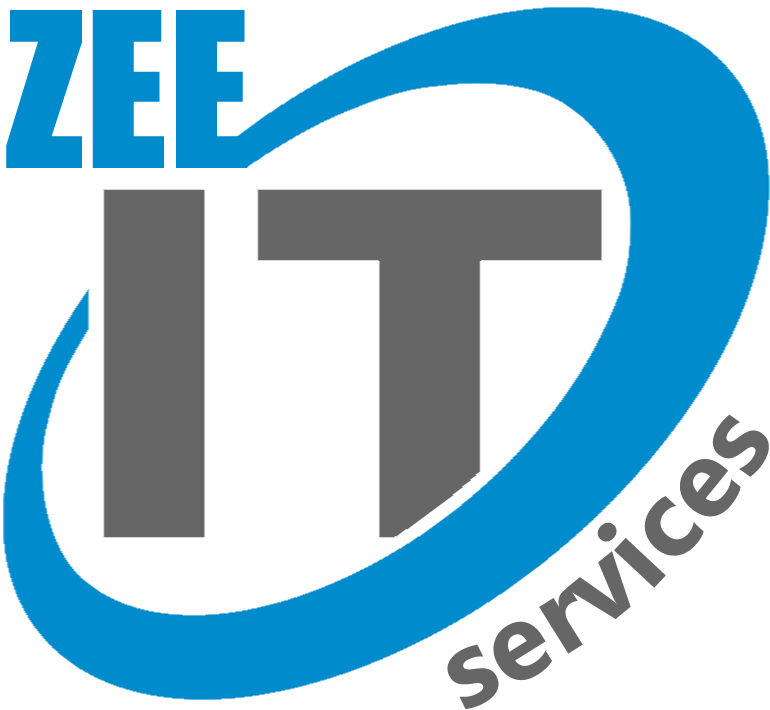


What is Keyword Clustering? How can it Impact our SEO Strategy
Everyone is aware of the significance of SEO for website rankings. But there is one thing we shouldn’t overlook: Google’s algorithm adjustments. In the past, Google prioritized keywords, but with time, Google preferences have also evolved. Google now gives both the keywords and the search intent priority. SEO tactics also changed as a result of Google’s priorities. Targeting one or more keywords no longer is enough, and SEO is no longer limited to keyword usage. The best approach for Google to fulfill this criteria is keyword clustering. Google now wants to satisfy the searcher’s goal. But what is keyword clustering, and how can it impact our SEO strategy? How can it impact our SEO strategy? In this comprehensive guide, we’ll delve deep into this topic, providing you with insights, strategies, and answers to frequently asked questions. So, fasten your seatbelt, and let’s embark on this SEO journey together.
What is Keyword Clustering?
Keyword clustering is a strategic approach in search engine optimization (SEO) that involves grouping related keywords together based on their semantic similarity. Instead of optimizing individual keywords separately, you organize them into clusters and create comprehensive content around each cluster. This method helps search engines better understand the context of your content and improves your chances of ranking higher in search results. To illustrate the power of keyword clustering, let’s consider an example related to “Traveling on a Budget.” In this scenario, our keyword clusters might include “budget-friendly travel destinations,” “cheap accommodation options,” and “affordable transportation.” By focusing on each cluster individually, you can create comprehensive guides for budget-conscious travelers. Each article can cover the specific aspects of budget travel, providing valuable information and boosting your SEO rankings.
Why is Keyword Clustering Important?
Keyword clustering is essential for several reasons:
⭐Improved Relevance: It enhances the relevance of your content by allowing you to address multiple aspects of a topic within a single piece of content. This aligns with what users are searching for and increases the likelihood of ranking well.
⭐Efficient Optimization: Keyword clustering streamlines on-page optimization efforts. You focus on optimizing one cluster of keywords per piece of content, making the process more manageable and effective.
⭐Enhanced User Experience: Grouping related keywords together results in more comprehensive content. This keeps visitors engaged and reduces bounce rates, which are positive signals for search engines.
⭐Higher Click-Through Rates (CTR): Keyword clustering enables you to create enticing meta descriptions and titles for your content, increasing CTR from search results pages.
⭐Long-Tail Keyword Utilization: It helps identify and leverage long-tail keywords, which can bring in highly targeted traffic that is more likely to convert.
How is Keyword Clustering Different from Topic Clustering?
Keyword clustering and topic clustering are related but serve different purposes:
- Keyword Clustering: Involves grouping keywords with similar meanings or intents to optimize content effectively. It’s primarily an SEO strategy.
- Topic Clustering: Focuses on organizing content around broader topics or themes. It’s more about content strategy and structuring your website to provide a better user experience.
While both approaches aim to improve SEO, keyword clustering is more granular and concentrates on optimizing individual pieces of content for specific keyword groups. Topic clustering is about organizing your content for a holistic user experience.
Steps to Perform Keyword Clustering
step 1: Generate a List of Keywords
To begin keyword clustering, compile a list of relevant keywords for your topic. Start by selecting a primary keyword that represents the main topic or theme of your content. This keyword should have a decent search volume and should be relevant to your website or blog. Tools like Google Keyword Planner, SEMrush, or Ahrefs can assist in this process. Let’s assume we’re optimizing content for a travel website. Our initial keyword list might include “best travel destinations,” “budget travel tips,” and “solo travel experiences.”
Step 2: Do Keyword Research for More Keywords
Once you have your list, analyze the relationships between the keywords. Now it’s time to expand your keyword list by conducting keyword research. Identify shared themes or topics. Again you can utilize those tools that are mentioned above to find related keywords and phrases that people commonly search for in relation to your primary keyword. In our example, “best travel destinations” and “solo travel experiences” both relate to travel destinations. These keywords can be clustered together.
Step 3: Group Keywords By Search Intent
Group the keywords you’ve gathered into categories based on search intent. For instance, you might have a cluster named “Travel Destinations” that includes keywords like “best travel destinations,” “top vacation spots,” and “must-visit places.” Search intent refers to the reason behind a user’s search query, which can be informational, navigational, or transactional. You can categorize your keywords like:
- Informational: “How can I travel on a budget?” or “What are some cost-saving travel tips?”
- Navigational: “Budget travel deals website” or “Best budget-friendly travel forums.”
- Transactional: “Book budget-friendly flights to Europe” or “Reserve affordable accommodations in Bali.”
Step 4: Make a Final Keyword List for SEO
Refine your keyword list by selecting the most relevant and high-performing keywords from each intent category. Ensure that the keywords you choose align with your content’s topic and can naturally fit into your article. Select one primary keyword from each cluster to serve as the focus keyword for your content. This keyword should be the centrepiece of your article. It helps search engines understand the primary topic you’re covering. From the informational category, “How can I travel on a budget?” or “What are some cost-saving travel tips?” you choose as your primary focus keywords.
Step 5: Optimize the Content for Keyword Clusters
Now that you have your keyword clusters and focus keywords, it’s time to create your high-quality content while strategically incorporating your selected keywords. Ensure that your primary keyword appears in the article’s title, headers, and throughout the content, maintaining a natural and reader-friendly flow. Make sure that your content provides in-depth information and answers common questions related to the topic.
6 Common Mistakes When Creating Keyword Clusters
When creating keyword clusters, it’s essential to avoid these common mistakes:
- Ignoring User Intent: Failing to consider user intent when grouping keywords can lead to irrelevant content.
- Over-Optimization: Stuffing too many keywords from a single cluster into a piece of content can be counterproductive.
- Neglecting Content Quality: Prioritizing keywords over the quality of your content can harm your rankings.
- Not Updating Clusters: Keywords and user intent can change over time, so it’s important to revisit and update your clusters regularly.
- Using Unrelated Keywords: Including unrelated keywords in a cluster can confuse search engines and users.
- Ignoring Analytics: Not analyzing the performance of your clusters can result in missed optimization opportunities.
Why choose Zee IT Services?
At Zee IT Services, we don’t just provide SEO and keyword clustering services; we craft digital success stories. Our expert team navigates the dynamic world of SEO, strategically employing keyword clustering to unlock your website’s true potential. Say goodbye to obscurity and hello to higher rankings, increased traffic, and unparalleled online visibility. Partner with us today, and let’s embark on a journey to elevate your digital presence.
Frequently Asked Questions
What are the primary benefits of keyword clustering?
Keyword clustering offers several advantages, including improved content relevance, streamlined on-page optimization, enhanced user engagement, and better click-through rates. It also helps harness long-tail keywords and boost site authority.
How can I get started with keyword clustering?
Begin by conducting comprehensive keyword research to identify related keywords. Group them into clusters based on semantic similarity. Create comprehensive content around each cluster, optimizing for the primary keyword within each group.
Are there any tools to assist with keyword clustering?
Yes, several tools can help with keyword clustering, such as SEMrush, Ahrefs, and Moz. These tools can assist in identifying related keywords and tracking your progress.
How long does it take to see results with keyword clustering?
The time it takes to see results with keyword clustering can vary. Some websites experience improvements in a matter of weeks, while others may take several months. Consistency and patience are key.
Can I combine keyword clustering with other SEO strategies?
Absolutely! Keyword clustering can complement other SEO techniques, such as backlink building, technical SEO, and content marketing. It often enhances the effectiveness of these strategies.

Understanding Marketing funnel: A Comprehensive Guide for Beginners
You’ve probably heard the term “marketing funnel,” but what does it mean? When we buy something, we go through several steps, starting with product selection and ending with the actual purchase. These actions are crucial for a company. These procedures reveal the preferences and choices of the customer, as well as what they genuinely desire. Marketing funnels can significantly impact your success, whether you’re the owner of a small business or a huge organization.
Because each client has unique preferences, customer journeys differ from customer to customer and can become complicated. However, a marketing funnel can help you understand a complex concept in a more straightforward and understandable way. Using a marketing funnel, you may quickly and simply understand your target market, identify all the areas in which your customer journey needs improvement, and adjust your marketing strategy as necessary.
In comparison to marketing efforts that target a single buying step, full-funnel marketing strategy can result in up to 45% greater ROI and a 7% increase in offline sales. Without any doubt, using a funnel to analyse your customers’ behaviour, preferences, and wants is the ideal strategy. However, before using a funnel, you need to understand what a funnel is, why it’s vital for our organization, and how it can help it. Furthermore, This guide is to give you complete guidance about the marketing funnel. We’ll explore why marketing funnels are important, delve into their stages, differentiate between B2B and B2C funnels, discuss how to create them, and highlight their benefits. So why do we wait, let’s start it!
What is a Marketing Funnel?
At its core, a marketing funnel is a visual representation of a customer’s journey from awareness to conversion. It’s akin to an actual funnel, where potential customers enter at the top and gradually narrow down their choices until they make a purchase. Moreover, Here’s a breakdown of the stages:
Marketing Funnel Stages
Awareness
At the top of the marketing funnel is the awareness stage. This is where potential customers first become aware of your brand or product. They might discover your business through social media because 54% of consumers conduct product research there. The goal here is to capture their attention and make a memorable impression.
Interest
Once potential customers are aware of your brand, they move to the interest stage. During this phase, they begin to explore your offerings in more detail. They might visit your website, read blog posts, or watch videos. Your content should aim to pique their interest and provide valuable information.
Consideration
In the consideration stage, potential customers are actively evaluating your products or services. They might compare your offerings with those of competitors, read reviews, or request more information. Moreover, It’s crucial to provide them with the information they need to make an informed decision.
Intent
The intent stage signifies a strong interest in your offerings. Potential customers are close to making a purchase decision. At this point, your marketing efforts should focus on guiding them toward conversion. This might involve offering discounts, free trials, or personalized recommendations.
Purchase
The purchase stage is where the conversion happens. Customers make a buying decision and complete the transaction. It’s essential to ensure a seamless purchasing process to reduce friction and increase customer satisfaction.
Post-Purchase
The journey doesn’t end with a purchase. The post-purchase stage involves nurturing the customer relationship. Provide exceptional customer support, offer relevant upsells or cross-sells, and encourage reviews and referrals. Satisfied customers can become loyal advocates for your brand.
Marketing Funnel Practical Examples
Now that we understand all the stages of the marketing funnel Let’s explore some real-world marketing funnel examples to see these principles in action and see the customer journey:
- E-commerce Funnel: A customer sees an ad on social media, clicks, explores products, adds items to the cart, and completes the purchase.
- B2B Software Funnel: A business discovers a software solution through a blog post, downloads a whitepaper, requests a demo, and eventually becomes a paying customer.
- Email Marketing Funnel: A subscriber receives a series of emails introducing a product, highlighting its benefits, and offering exclusive discounts, leading to a purchase.
What is the Difference Between B2B and B2C Marketing Funnels?
B2B (Business-to-Business) and B2C (Business-to-Consumer) marketing funnels share similarities but also have distinct differences.
B2B Marketing Funnels
In B2B marketing, the sales process often involves multiple decision-makers within an organization. The funnel is typically longer and more complex. Content and strategies should focus on addressing the needs and pain points of businesses.
B2C Marketing Funnels
B2C marketing funnels are usually shorter and involve individual consumers. The decision-making process is often quicker, driven by emotion and impulse. Content should emphasize the benefits and value of the product or service to the individual customer.
How to Create a Marketing Funnel
Furthermore, Creating an effective marketing funnel involves several key steps:
- Define Your Target Audience: Understand your ideal customers and their needs.
- Create Compelling Content: Develop content that addresses customer pain points.
- Choose the Right Channels: Determine where your audience spends their time.
- Capture Leads: Use lead magnets, such as eBooks or webinars, to collect contact information.
- Nurture Leads: Build relationships through email marketing and personalized content.
- Convert Leads: Encourage conversions through compelling offers and CTAs.
- Measure and Optimize: Analyse data to refine your funnel for better results.
How to Build a B2B Marketing Funnel
Building a B2B sales marketing funnel requires a targeted approach that include:
- Identify Decision-Makers: Understand the hierarchy within the target organization.
- Content for Businesses: Create content that speaks to the challenges and goals of businesses.
- Relationship Building: Nurture leads through personalized communications and relationship-building efforts.
- Customize Offerings: Tailor your offerings to meet the unique needs of businesses.
- ROI Analysis: B2B funnels often require longer nurturing, so measuring ROI is crucial.
How to Build a B2C Marketing Funnel
B2C marketing funnels focus on individual consumers and include:
- Emotional Appeal: Craft marketing messages that resonate emotionally with consumers.
- Simplified Process: Make the buying process as straightforward as possible.
- Feedback and Reviews: Encourage customer feedback and positive reviews to build trust.
- Cross-selling and Upselling: Recommend complementary products to increase sales.
- Mobile Optimization: Ensure your funnel is mobile-friendly, as many B2C transactions occur on mobile devices.
The Role of SEO in the Marketing Funnel
Now that we get a complete idea about the marketing funnel but a very crucial part that we can’t ignore is SEO. Search engine optimization (SEO) is vital for increasing the visibility of your content at every stage of the funnel. In addition, By optimizing your website and content for relevant keywords, you can attract organic traffic.
SEO at the Awareness Stage
As we already discussed, The marketing funnel begins with the awareness stage, where potential customers first become aware of your brand or product. During this phase, SEO is instrumental in increasing your online visibility. Here’s how:
- The keywords your customers use to search for your products or services are identified through keyword research.
- The purpose of SEO-driven content is to answer the questions potential customers have with valuable information and answers.
- Local SEO makes sure your company appears in local search results if you have a physical presence.
- The presence of reputable backlinks on your website increases brand exposure during the awareness stage.
SEO at the Interest Stage
Once potential customers move into the interest stage, SEO continues to play a pivotal role in keeping them engaged and informed. Here’s how:
- SEO ensures that your content remains relevant to the interests of your target audience By regularly updating and optimizing content
- SEO encompasses elements that enhance user experience, such as mobile responsiveness, page load speed, and easy navigation.
- Moreover, SEO professionals continuously analyse search trends and adjust keyword strategies to match evolving user queries.
SEO at the Consideration and Intent Stages
As potential customers progress through the funnel, SEO becomes increasingly critical in influencing their decision-making process. Here’s how SEO contributes at these stages:
- SEO encourages the creation of in-depth content that thoroughly addresses potential customers’ questions and concerns.
- SEO includes optimizing conversion-focused elements on your website, such as landing pages and calls-to-action (CTAs).
- Monitoring your competitors’ online strategies and adjusting your strategy accordingly is part of SEO. Keeping yourself competitive in search results can trap potential customers.
SEO at the Purchase and Post-Purchase Stages
Moreover, Even after a successful purchase, SEO continues to be relevant in fostering customer loyalty and advocacy but how:
- Customer satisfaction and loyalty can be increased through SEO-driven content such as guides, FAQs, and resources.
- Positive customer reviews can boost your online reputation and influence others in their decision-making.
- By analyzing customer behavior and preferences, SEO can inform cross-selling and upselling strategies, leading to additional purchases.
Benefits of Funnel Marketing
Additionally, Marketing funnels offer numerous benefits:
- Efficiency: Funnels streamline the customer journey, reducing wasted efforts.
- Insights: They provide valuable data on customer behavior and preferences.
- Personalization: Funnels allow for personalized marketing, increasing engagement.
- Improved Conversions: By guiding customers through stages, funnels boost conversion rates.
- Customer Retention: Post-purchase nurturing can lead to loyal customers and repeat business.
Tips for marketing funnel:
Furthermore, You can improve your marketing funnel by:
- Incorporate personalization in your marketing efforts. Address customers by their names in emails, recommend products based on their browsing history, and send targeted offers.
- Continuously optimize your funnel through A/B testing. Experiment with different elements, such as headlines, CTA buttons, and images, to determine what resonates best with your audience.
- Don’t lose sight of potential customers who didn’t convert. Implement remarketing campaigns to re-engage them through display ads or email reminders.
Common Mistakes to Avoid
- Neglecting mobile optimization
- Ignoring the power of social proof
- Failing to personalize marketing efforts
- Overlooking the importance of analytics
- Not conducting A/B testing
Frequently Asked Questions
What is the primary goal of a marketing funnel?
The primary goal of a marketing funnel is to guide potential customers through a series of stages, from awareness to action, ultimately leading to conversions.
How can I optimize my marketing funnel for better results?
To optimize your marketing funnel, regularly analyse data, conduct A/B testing, and focus on personalization and mobile optimization.
Why is social proof important in marketing?
Social proof, such as reviews and endorsements, builds trust and credibility with potential customers, influencing their purchasing decisions.
What role does SEO play in the marketing funnel?
SEO is essential for increasing the visibility of your content and attracting organic traffic at every stage of the marketing funnel.
What are common mistakes to avoid in marketing funnel creation?
Common mistakes include neglecting mobile optimization, underestimating the power of social proof, failing to personalize marketing efforts, and not conducting A/B testing.

The Art of Keyword Domination: How Our Miami SEO Agency Delivers Results
In the ever-evolving digital landscape, mastering the art of keyword domination is paramount for any business looking to succeed online. Welcome to the world of search engine optimization (SEO), where the right keywords can make or break your online presence. Our SEO company Miami is committed to helping you achieve the pinnacle of online success through a meticulously crafted strategy that revolves around the effective use of keywords. Furthermore, In this comprehensive guide, we will delve into the intricacies of keyword domination and unveil how our agency delivers remarkable results that speak for themselves.
The Art of Keyword Domination:
From a bustling metropolis to a digital powerhouse, Miami has witnessed a transformative journey, much like the evolution of SEO. At our Miami SEO agency, we combine the vibrant spirit of the city with cutting-edge SEO techniques to deliver unparalleled results for our clients. Our approach is a delicate balance between art and science, where each keyword is carefully chosen and strategically placed to dominate search engine results.
Keyword Research Redefined:
The foundation of our keyword domination strategy lies in our meticulous keyword research process. We go beyond the obvious keywords and dive deep into your industry’s nuances to identify hidden opportunities. In addition, By leveraging both primary and LSI (Latent Semantic Indexing) keywords, we create a comprehensive keyword portfolio that ensures your content resonates with both search engines and your target audience.
The Role of Long-Tail Keywords
Incorporating long-tail keywords is a game-changer in keyword domination. These longer, more specific phrases cater to users who are closer to the point of purchase. Our Miami SEO agency specializes in identifying and optimizing for relevant long-tail keywords. Moreover, By addressing niche queries, we position your brand as an authoritative source and increase the likelihood of conversion.
Unveiling ZEE IT Services Miami SEO Agency’s Approach
Furthermore, At ZEE IT Services, we don’t just optimize keywords; we craft comprehensive SEO strategies that encompass all aspects of online visibility.
SEO Audit:
Before embarking on any SEO journey, a thorough audit is crucial. Our Miami SEO agency commences with an in-depth website audit to identify existing strengths, weaknesses, and opportunities.This audit guides our strategy, enabling us to rectify issues and also enhance your website’s overall performance.
Content that Converts:
Creating content that speaks to both search engines and human readers is an art in itself. Our Miami SEO agency’s content creation process revolves around seamlessly integrating keywords into valuable, informative, and engaging content. Moreover, This not only enhances your search engine rankings but also establishes your authority within your niche.
On-Page Optimization:
The journey to keyword domination extends beyond content creation. Our experts meticulously optimize every element of your website, from meta tags to headers, ensuring that your chosen keywords are strategically placed for maximum impact. Additionally, This holistic approach to on-page optimization elevates your website’s visibility and click-through rates.
Off-Page Optimization Strategies
Off-page optimization focuses on building a strong online reputation through credible backlinks and mentions. Our agency nurtures relationships with authoritative websites to secure high-quality backlinks, signaling to search engines that the website is a reliable source of information.
Local SEO Tactics for Miami Businesses
For businesses in Miami, local SEO is a game-changer. Our agency optimizes Google My Business listings, ensures consistent NAP (Name, Address, Phone Number) citations, and leverages location-specific keywords to boost visibility among local audiences.
Backlink Strategy:
Backlinks are the currency of the digital realm, and our Miami SEO agency has mastered the art of acquiring high-quality backlinks. Through strategic outreach and relationship-building, we secure authoritative backlinks that not only drive traffic but also enhance your website’s credibility in the eyes of search engines.
Measuring and Analyzing SEO Success
Transparency and accountability are key pillars of our Miami SEO services. Additionally, We use advanced analytics tools to track key performance indicators (KPIs), providing clients with detailed insights into the impact of our strategies.
Mobile-Friendly
With the rise of mobile searches, optimizing websites for mobile devices is crucial. Our agency ensures that websites are mobile-friendly, fast-loading, and provide a seamless user experience, all of which contribute to higher search rankings.
User Experience
User experience is a pivotal factor in keyword domination. Our agency focuses on creating intuitive, user-friendly website designs that enhance navigation and minimize bounce rates. Additionally, A seamless user experience not only keeps visitors engaged but also signals search engines that your website is valuable and relevant.
The Expertise of Our Miami SEO Agency
Our Miami SEO agency comprises experienced professionals with a deep understanding of SEO dynamics. Our experts stay up-to-date with algorithm changes to adapt strategies accordingly, ensuring consistent performance despite shifting digital landscapes. Furthermore, From technical experts to creative content creators, our team collaborates to deliver holistic and effective SEO solutions.
Data-Driven Insights
In the world of SEO, data is the guiding light that illuminates the path to success. Our Miami SEO agency employs advanced analytics tools to monitor keyword performance, track rankings, and analyze user behavior. These insights empower us to fine-tune our strategy continuously, ensuring that your keyword domination remains unchallenged.
Why choose Zee IT Services?
Looking to boost your online presence and skyrocket your business in Miami to the top of search engine rankings? Look no further than professional SEO company Zee IT Services! Our Miami SEO Agency is your ultimate partner in driving exceptional results. With a team of seasoned experts, we craft tailor-made strategies that seamlessly blend cutting-edge SEO techniques with in-depth market insights. From comprehensive keyword research to flawless on-page optimization and authoritative link-building, we’re here to supercharge your digital success. Don’t just settle for visibility; thrive with Zee IT Services and watch your business flourish in the digital landscape.
Frequently Asked Questions
How long does it take to see results from keyword optimization?
Results can vary based on several factors, including the competitiveness of your industry and the current state of your website. However, many clients start noticing improvements within a few months of implementing our keyword domination strategy.
What sets your Miami SEO agency apart from others?
Our agency’s approach is rooted in a blend of creativity and data-driven insights. We don’t just optimize for keywords; we craft experiences that resonate with both search engines and users, resulting in sustainable, long-term results.
Is keyword domination a one-time effort?
Keyword domination is an ongoing process. As search algorithms evolve and user behaviour changes, it’s crucial to adapt your strategy. Our agency is dedicated to staying ahead of these changes, ensuring your dominance remains unwavering.
Can you guarantee the top spot in search engine rankings?
While we cannot guarantee specific rankings, we can guarantee our commitment to delivering the best possible results. Our track record speaks for itself, with numerous clients achieving top rankings and increased organic traffic.
How do you choose the right keywords for my business?
Our keyword selection process is a combination of industry research, competitor analysis, and understanding your target audience. We identify keywords that have high search volume, relevance, and the potential to drive conversions.

The Art of Long-Tail Keywords: Unleashing their Power in Keyword Searches
Long-tail keywords, it is frequently said, are simpler to rank for and have higher conversion rates. Is this, however, genuinely true? In the ever-evolving landscape of digital marketing, mastering the art of long-tail keywords is akin to discovering a hidden treasure chest. These extended keyword phrases hold the key to unlocking untapped search potential, enhancing user experience, and boosting your website’s visibility. In this guide, we delve into the nuances of long-tail keywords, unraveling their power and demonstrating how to integrate them seamlessly into your content strategy.
Understanding Long-Tail Keywords
Long-tail keywords are phrases that consist of three or more words and are highly targeted. Mostly they count in lower search volumes keywords than broader keywords, but they exhibit higher conversion rates. In actuality, over 92% of all terms entered into search engines by users are long-tails, with each receiving fewer than 20 monthly searches, according to study. For instance, while the keyword “running shoes” is generic, a long-tail keyword like “best lightweight running shoes for women” caters to a more specific audience, leading to better-qualified traffic.
Why Are They Called “Long-Tail” Keywords?
The term “long-tail” originates from the visual representation of keyword distribution on a graph. While a few short-tail keywords have high search volumes, they represent the “head” of the graph. The majority of keywords, however, form the “long tail,” characterized by lower search volumes individually but collectively contributing to a substantial portion of overall search traffic. Long tail keywords, therefore, focus on capturing these specific and less competitive search queries, ultimately driving targeted traffic to your website.
Why Are Long-Tail Keywords Better Than Short-Tail Keywords?
Long tail keywords, as the name suggests, are longer and more specific keyword phrases. According to studies, long-tail keywords convert 2.5 times as often as short-tail keywords. Only 7% of search inquiries are one word or an acronym, compared to 56% of consumers who use three or more words. Unlike short-tail keywords, which are brief and general, long-tail keywords provide a clearer picture of user intent. For instance, consider the difference between “Laptop bag” (short tail) and “best lightweight Laptop bag for women” (long-tail). While the former may attract a larger audience, the latter targets individuals actively seeking specific information. This specificity leads to higher conversion rates and more engaged visitors, making long-tail keywords a superior choice.
Types of Long-Tail Keywords
Supporting Long-Tail Keywords
Supporting these keywords revolve around providing additional information, answering specific queries, or offering supplementary insights. For instance, if your main keyword is “best watches,” a supporting long-tail keyword could be “best lightweight digital watches for women.”
Topical Long-Tail Keywords
Topical long-tail keywords pertain to a specific topic or theme. These keywords help you explore various facets of a subject matter. For example, if your website focuses on travel, a topical long-tail keyword could be “budget-friendly European destinations for solo travelers.”
The Art of Long-Tail Keywords:
In the world of SEO, these keywords are becoming important. With a more specialized and nuanced approach, they go beyond the typical one- or two-word keywords. Their aptitude for capturing the essence of user intent is the key. Let’s explore the facets that make long-tail keywords an indispensable tool for digital marketers:
Boost Relevance
Long-tail keywords possess the remarkable ability to align perfectly with search intent. When users type in detailed queries, they are looking for precise answers. By optimizing your content for long-tail keywords like “how to create latte art at home,” you cater to those who are not just interested in coffee but want to master a specific skill. This targeted approach not only enhances your content’s relevance but also nurtures engaged audiences.
Increase Conversion Rates
These keywords are known to improve conversion rates significantly. When users search for detailed phrases like “best noise-canceling headphones under $100,” they are already informed and closer to making a purchase decision. By providing tailored solutions to their specific queries, you establish authority and trust, increasing the likelihood of conversions.
The Power of Intent
Long-tail keywords are a window into the searcher’s intent. By analyzing these phrases, you gain insights into what users are looking for, enabling you to tailor your content accordingly. When someone searches for “easy vegetarian recipes for beginners,” they are seeking specific guidance. Incorporating such long-tail keywords into your content allows you to meet their needs precisely, establishing your authority and expertise.
Niche Domination
These keywords are your pathway to dominating specific niches within your industry. While short-tail keywords might draw a larger crowd, long-tail keywords allow you to become a specialist in a particular area. For instance, typing “laptop” will return millions of results and has a wide targeting audience. However, if you enter “best laptop for games” or “best laptop for under $500,” long-tail keywords will help you be more focused and targeted for that particular niche.This specialization not only aids in attracting the right audience but also positions you as an authoritative voice in that niche.
Navigating the Competition
While competitive keywords might seem enticing, they often come with fierce rivalry and an uphill battle for visibility. Long-tail keywords offer a strategic advantage by targeting a niche audience. They help you bypass the competition and capture users who are further down the conversion funnel, making it easier to stand out and connect with potential customers.
Enhancing User Experience
Long-tail keywords play a pivotal role in enhancing user experience. When your content aligns with what users are searching for, they spend more time on your website, reducing bounce rates. This positive interaction signals search engines that your content is valuable, thereby improving your rankings. Crafting content around “home workout routines without equipment” or “budget-friendly DIY home décor ideas” caters to specific needs, fostering engagement.
Leveraging the Long Tail for Voice Search
As voice search gains prominence, long-tail keywords become even more crucial. Voice queries are often conversational and context-rich, mirroring the way people naturally speak. Integrating long-tail keywords that mimic spoken language enables your content to appear in voice search results, expanding your reach and visibility.
Mixing Short and Long-Tail Keywords
While these keywords are powerful, short keywords have their place too. A balanced approach ensures you capture both wide-ranging traffic and targeted niche audiences. Blend phrases like “digital marketing strategies” with long-tail gems like “effective social media content calendar template” to create a well-rounded content strategy.
Strategies for Finding Long-Tail Keywords
Utilize Keyword Research Tools: Leverage tools like Google Keyword Planner, SEMrush, or Ahrefs to identify relevant long-tail keywords. These platforms provide insights into search volume, competition, and related keywords, aiding your keyword discovery process.
Analyze User Questions: Browse forums, Q&A platforms, and social media to uncover questions related to your niche. Transform these questions into long-tail keywords to address the specific needs of your audience.
Competitor Analysis: Study your competitors’ content and keywords. Identify gaps in their strategy and explore opportunities to target keywords they may have missed.
Long Tail Suggestions: Leverage search engines’ autocomplete and related search suggestions to generate long-tail keyword ideas.
Content Gap Analysis: Identify topics within your niche that are underrepresented. Creating content around these topics allows you to naturally incorporate long-tail keywords.
Local SEO: If applicable, include location-based long-tail keywords to attract local traffic and enhance your local SEO efforts.
Integrating Long-Tail Keywords into Your SEO Strategy
Incorporating long-tail keywords into your SEO strategy can be a game-changer. Here’s how:
Thorough Research
Invest time in comprehensive keyword research. Leverage tools like Google Keyword Planner, SEMrush, or Ahrefs to identify relevant long-tail keywords that align with your content and target audience.
Natural Integration
Once you’ve identified the right long-tail keywords, integrate them naturally into your content. Avoid keyword stuffing, as search engines prioritize user experience and penalize over-optimized content.
High-Quality Content
Craft high-quality, informative, and engaging content that revolves around your chosen long-tail keywords. The goal is to provide value to your readers while seamlessly incorporating these keywords.
Monitor and Adjust
SEO is an evolving field. Regularly monitor your keyword performance, analyze user behavior, and make necessary adjustments to your content and strategy.
Why choose Zee IT Services?
Introducing ZEE IT Services – your gateway to harnessing the true potential of long-tail keywords. Our expert team is your partner in unraveling the art of precision searches, ensuring your content stands out in a sea of information. With our tailored strategies, you’ll unlock the power of long-tail keywords, driving targeted traffic and amplifying your online presence. Elevate your digital strategy with ZEE IT Services and redefine success in keyword searches today!
Frequently Asked Questions
Why are long-tail keywords essential for SEO?
Long-tail keywords enable you to target specific user intent, reduce competition, and enhance user experience, leading to better search rankings and conversion rates.
How do long tail keywords impact my website’s ranking?
Long tail keywords often have lower competition, making it easier to achieve higher rankings. Additionally, they contribute to a more diverse and engaged user base.
Can I use long tail keywords alongside short tail keywords?
Absolutely! In fact, combining both types of keywords in your content strategy creates a balanced approach that caters to a wide range of search queries.
Are there any tools to help with long tail keyword research?
Yes, there are several tools such as Google Keyword Planner, SEMrush, and Ahrefs that offer robust keyword research functionalities.
How do I measure the effectiveness of my long-tail keyword strategy?
Track metrics such as organic traffic, click-through rates, and conversion rates for pages optimized with long-tail keywords to gauge their impact on your overall SEO strategy.






